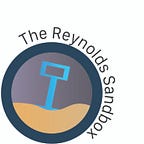Kia Rastar, from Reno to the Middle East, working through his lens and the lens of others
Reporter Kailee Bryant sits down with Kia Rastar, an Iranian Kurdish photographer now studying journalism in Reno. Rastar discusses the skills and concept of being behind a camera while portraying important global and local stories.
Kia Rastar, an Iranian Kurdish photographer, started his journey into professional photography and visual storytelling in 2018 while also pursuing personal passion projects. Kia is currently working with Middle East Images as an Archives Manager where he is in charge of organizing, preserving, and providing access to historical records. He’s also pursuing a Master’s in journalism at the Reynolds School of Journalism at the University of Nevada, Reno.
Question: Can you tell me a little bit about yourself with your journey of being a photographer and how you got to that kind of phase in your life?
Answer: You know, I’m always thinking about how to complete my stories, but my last years in Iran, and I [was] in Turkey for like a year and a half before coming here.
To complete my story, I’m always thinking about how I have lots of jobs without completing them. My manager started with engineering and I’ve been working in engineering for like 10 years, but now I am a busy professional photographer, I’ve been working in Iran, and Turkey.
Question: What inspired you to pursue your work with Middle East Images? What inspired you to start doing cross-cultural photography, particularly in the Middle East?
Answer: I think there is another thing in life, you know, you can do another thing and after these years is having a camera.
The only one that I did in sports was for MMA photography and {Iranian fighters.]
When I was following their matches, I was like I should go out. It’s so great. They’re so hard. But in those people that’s when I thought they were not similar to me.
I found lots of things in common, we could talk about how to compare documentary photography for me and MMA for them. How we lose lots of things in our life for the love of life, you know.
So for me, I like to explore, I like to be me, to be an observer in any situation without any judgment, you know. That’s what I like about photography and the opportunity this camera gave me, for example, MMA matches that were kind of underground at that time in Iran.
Question: Have there been any challenges that you have faced when working in different countries that you’ve been to?
Answer: In my MMA [photography] I was alone. I was so calm. I know what I’m doing here, but in lots of countries, we were in this competitive environment and I liked it. You know, I learned a lot. You can compare your photos with other photographers about what they see and what you don’t see.
Question: Have you ever encountered any misconceptions or stereotypes about the Middle East through your work?
Answer: I’m trying my best to avoid any judgment about our photos. I’m always talking to the photographers about how your friends should not make people judge. You shouldn’t judge anybody. I’m pushing our photographers. We teach people to listen to [others] because they are people, they are human, they have a voice, and we should hear them. By comparing both sides, you make people jump without any judgment. I’m talking about this always, any stories that our photographers are working on, I hope I can do for myself too.
Question: How do you balance the desire to capture authentic moments with the need to respect the privacy and dignity of the people that you’re taking photos of or the subjects?
Answer: As a documentary photographer. I’m working with a 5 to the 35-millimeter lens, and the perspective of the field, and of the view of what you are working with. It’s obvious that you should be close to the subject. You cannot take photos from a long distance. And for example in documentary photography, I can say when you’re dealing with the longest lens with the telephonic lens, it means nothing because it is the distance between you and the subject. If I’m gonna be there I should be there. I should be there with them, you know, so maybe lots of patience but, that’s your problem as a photographer. It’s not your subject’s problem, you should try your best to gain their trust and if they are not trusting you then that is your problem.
Question: Can you describe your process for selecting subjects and locations for your photography projects?
Answer: Exploring this city that I’m doing right now, at our university and in Reno too. To explore what’s going on, I try to capture my emotions.
I like to take portraits to get familiar with them and have an opportunity to talk with them. However an opportunity to see them, so for now, I’m just thinking about framing and seeing people’s faces. How they stand in front of the camera, and all of them are teaching me something about this environment.
Q & A Reporter Kailee Bryant
